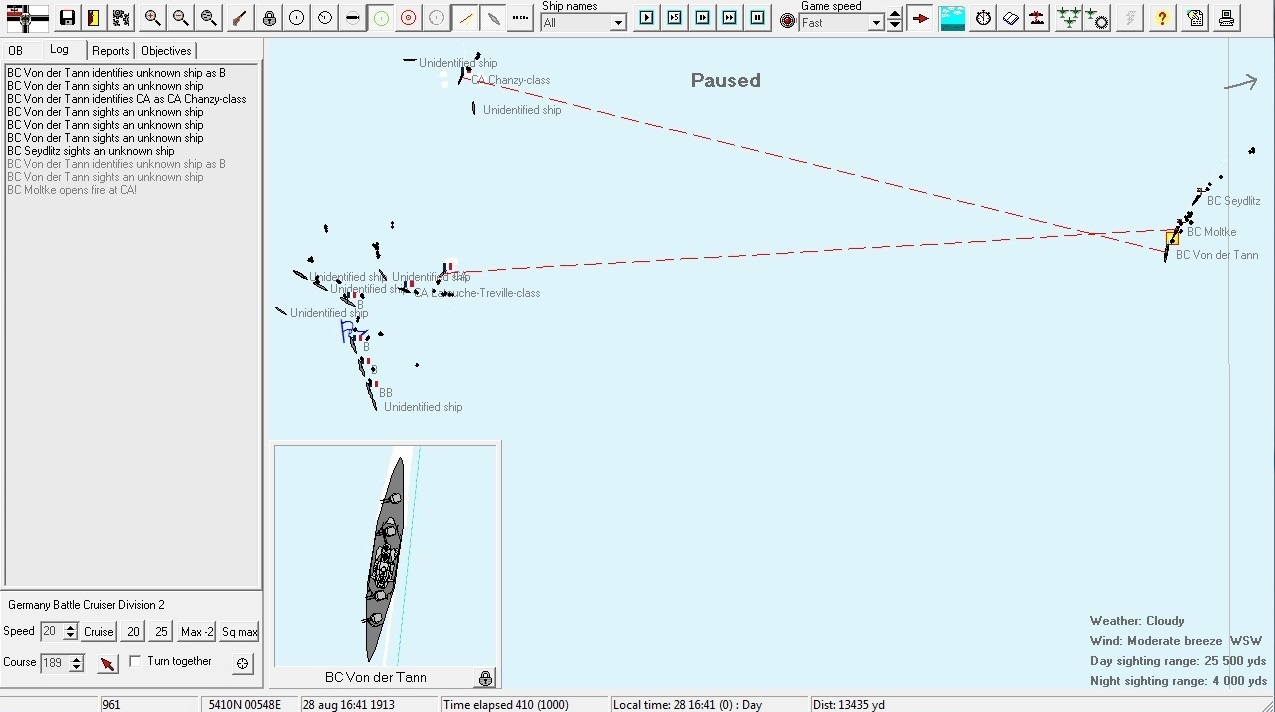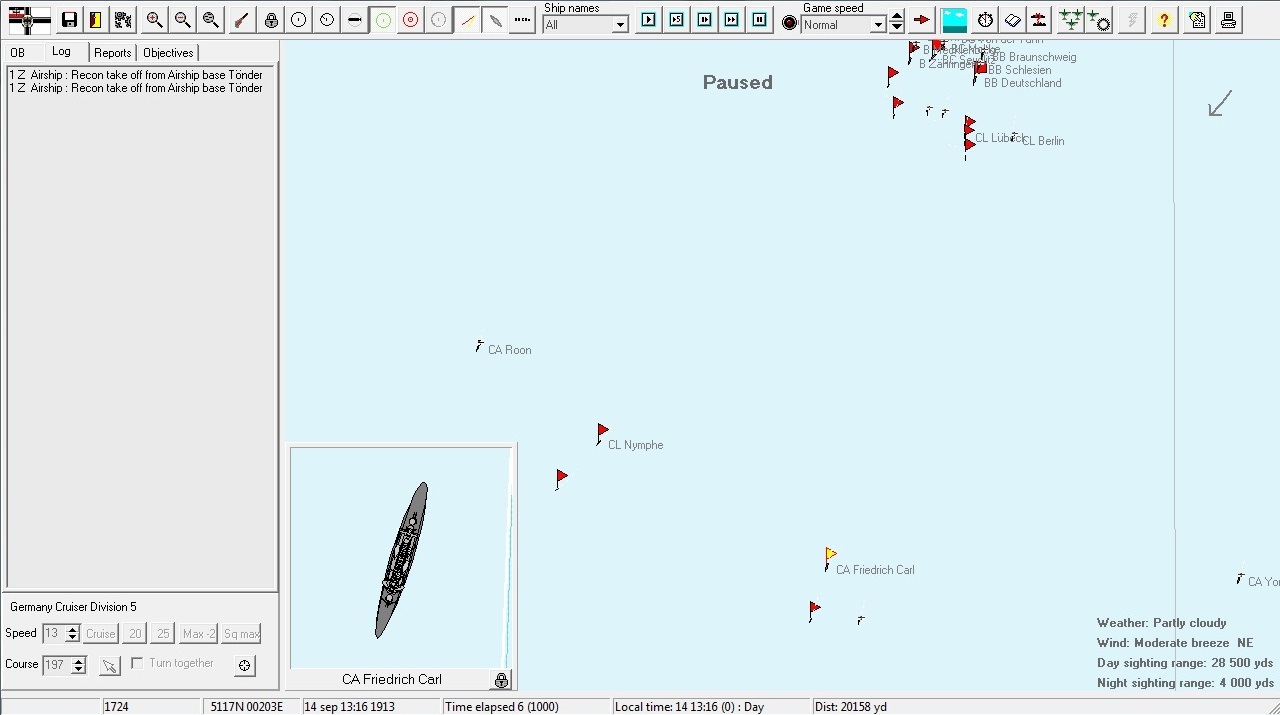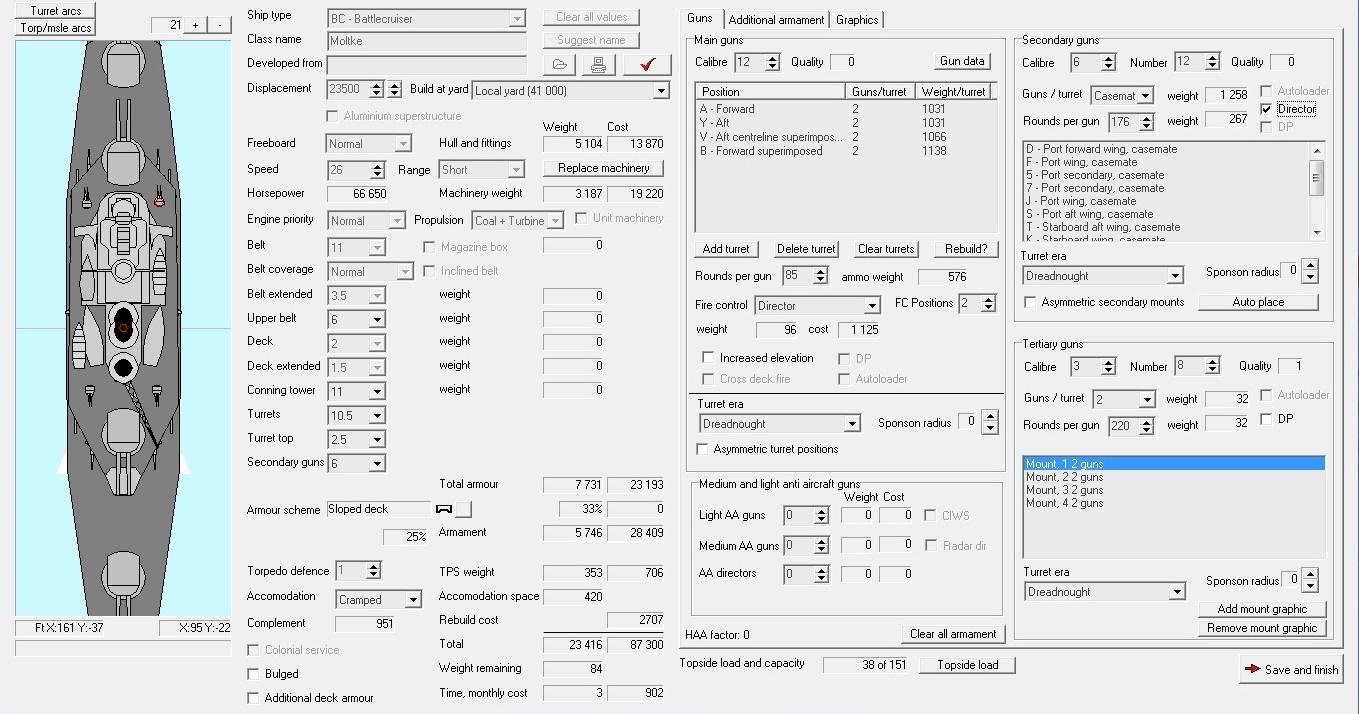Published on May 16, 2023
The dreadnought era in the game can be said to cover roughly the years between 1905 and 1945. The completion of the first all big gun battleship, the HMS Dreadnought, was a consequence of technical developments that made long range fire by heavy guns more accurate and effective. Fighting ranges for battleships will be from 10,000 to 20,000 yards in the mid-1910s. The lower bound for combat range will tend to be governed by torpedo ranges. By this time the range and reliability of torpedoes have increased considerably. The speed of battleships will be around 20 knots or slightly above, which is a couple of knots higher than normal pre-dreadnought speeds, and comparable with a cruiser from the 1890s.
 German battlecruisers in combat against French battleships
German battlecruisers in combat against French battleships
Rule the Waves 3 will show you not only the mechanics of how ships fought, but also why Navies organized as they did and why fleets deployed as they did. In the early dreadnought period, scouting light cruisers advancing in front of the battle fleet are the chief means of situational awareness. Spotting the enemy fleet at an early stage to plan your deployment or decide on whether to engage or withdraw is vital.
 The cruiser screen of the German High Seas Fleet
The cruiser screen of the German High Seas Fleet
The pace of technical development is still high in the 1920s and 1930s, but not quite at the same breakneck pace as before 1915. Indeed, some battleships that fought in WW1 gave good service in WW2. Battleships will continue to evolve, but the changes are more gradual, like higher speeds and better fire control.
The main development seen in the 1920s and 1930s is the rise of naval aviation. Initially, the main contribution of naval aviation is better scouting. Early aircraft have low ranges, limited weapons loads and doubtful reliability, so their ability to hurt undamaged ships is limited. Soon however, aircraft develop until by the 1930s they can be a serious threat to battleships. This will lead to a flurry of reconstruction, as existing battleships need to be equipped with anti-aircraft guns to be able to protect themselves against air attack.
 A battlecruiser from the 1910s being rebuilt with more anti aircraft guns.
A battlecruiser from the 1910s being rebuilt with more anti aircraft guns.
The rise of naval aviation will also cause the development of aircraft carriers. Initially, aircraft carriers will be conversions of existing ships, but with time you will be able to build purpose built aircraft carriers.
By the 1940s, airpower will start to play a more and more important role in naval warfare. Battleships will need their own air carrier based air support and think twice before they enter constricted waters in range of enemy airfields. The era of the dreadnought battleship will draw to a close. At the same time, developments in jet aircraft will make many carriers obsolete. But that is the subject of our next Dev Diary.


 German battlecruisers in combat against French battleships
German battlecruisers in combat against French battleships The cruiser screen of the German High Seas Fleet
The cruiser screen of the German High Seas Fleet A battlecruiser from the 1910s being rebuilt with more anti aircraft guns.
A battlecruiser from the 1910s being rebuilt with more anti aircraft guns.



